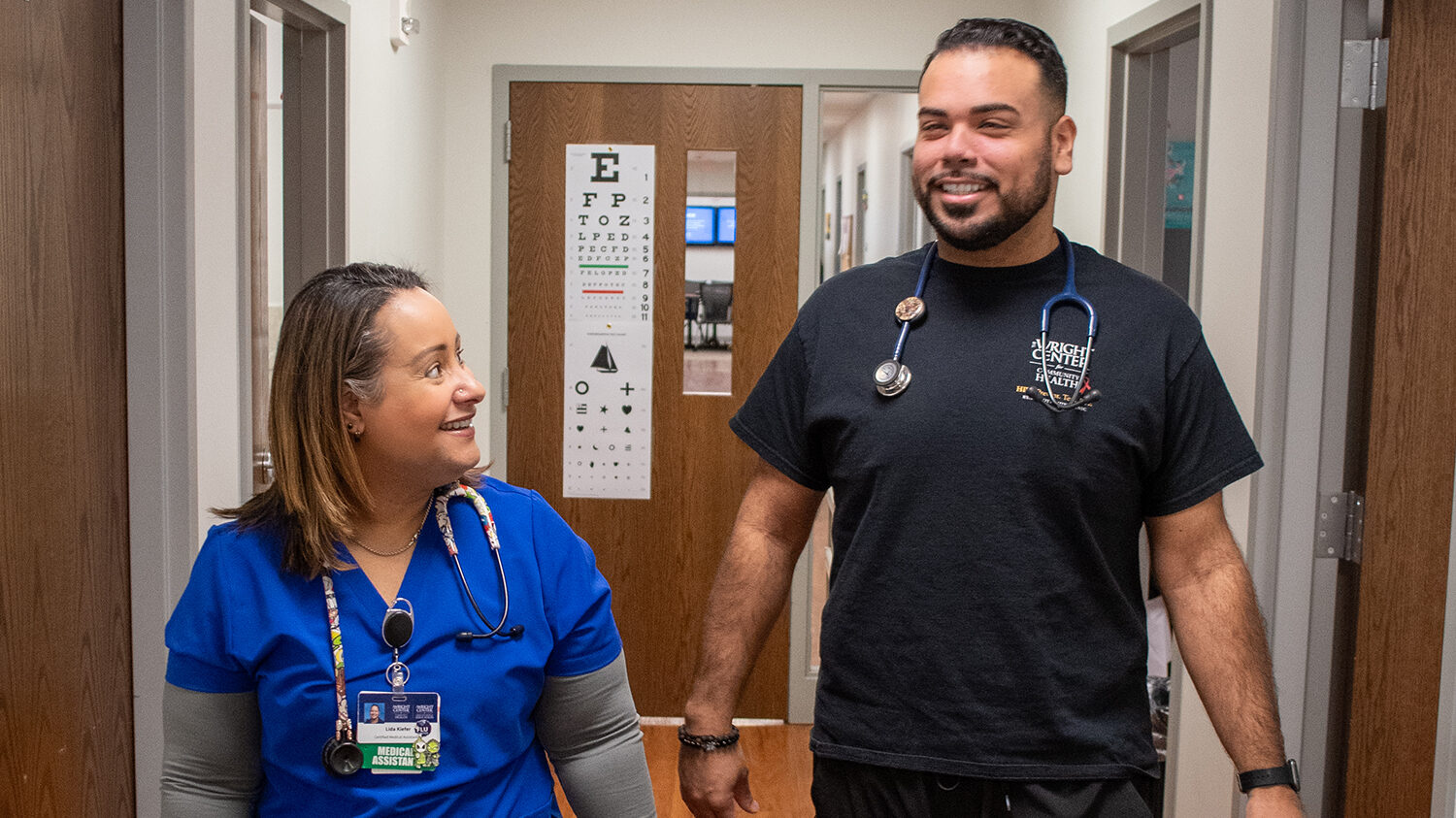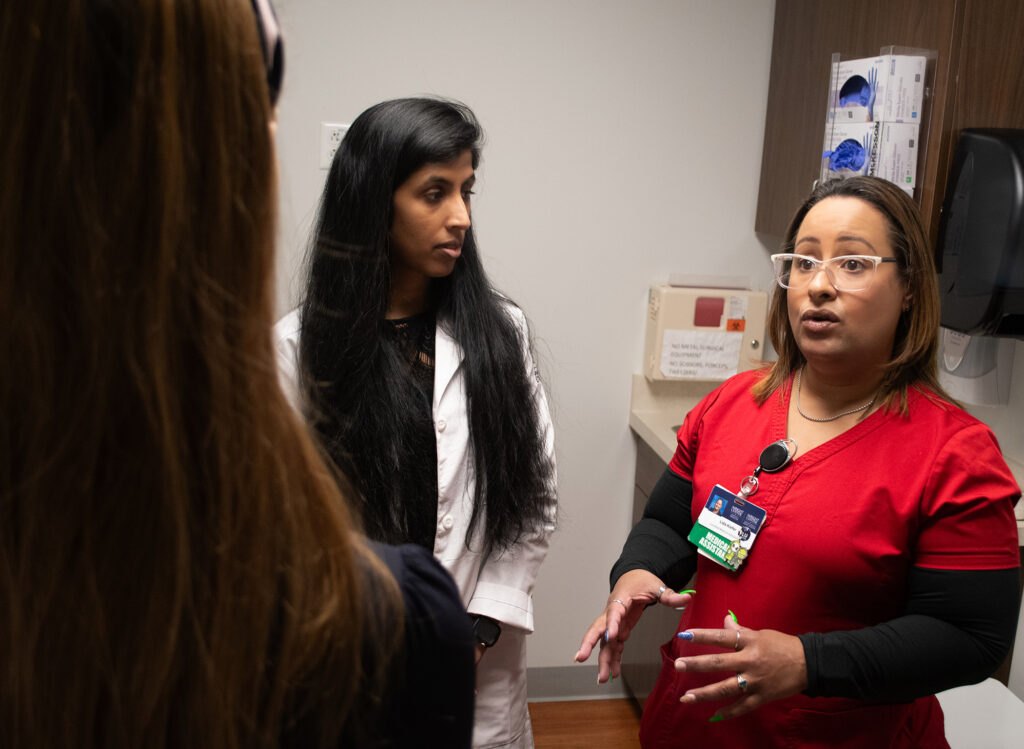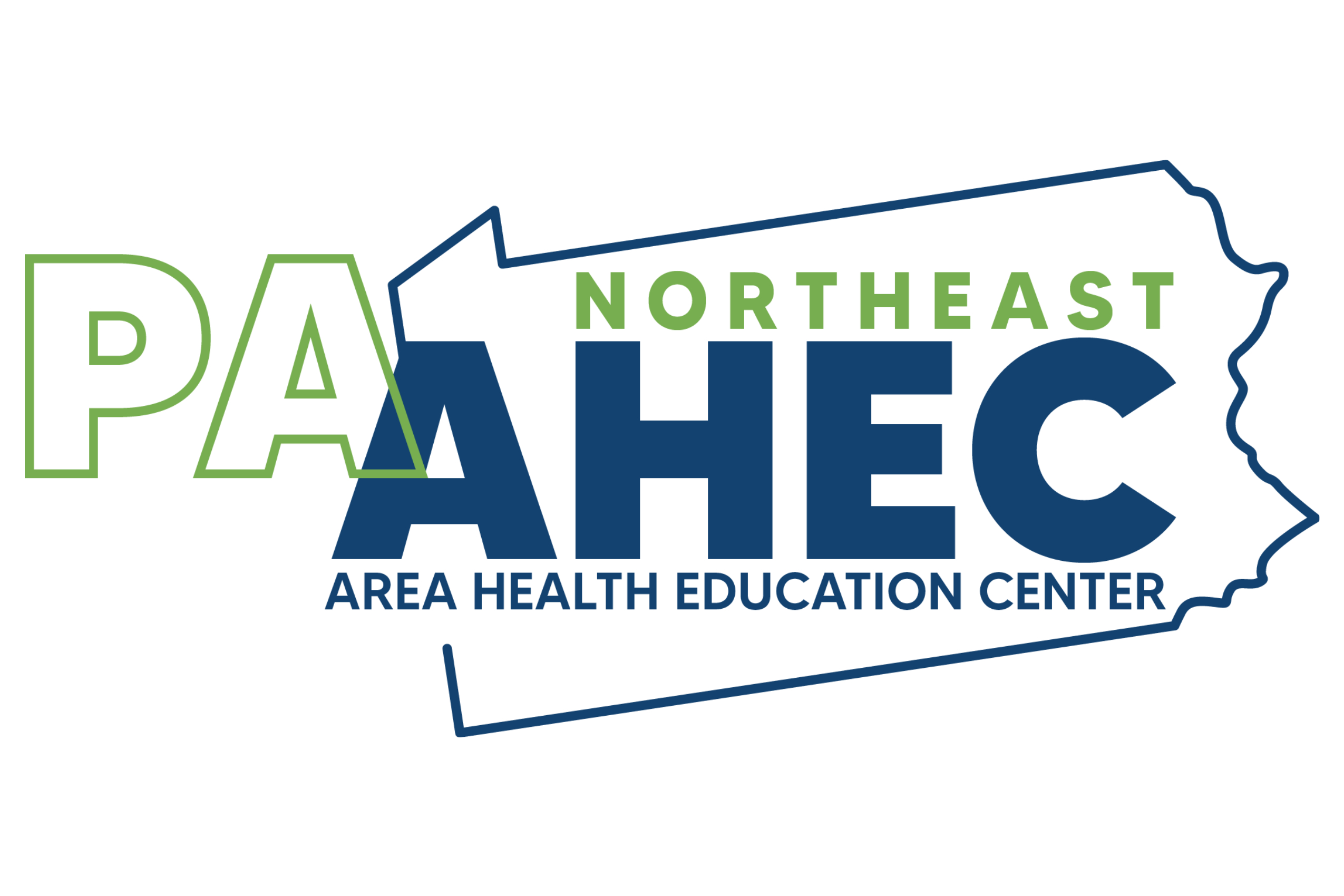Medical interpreters give patients a true voice

Lida Kiefer, left, and Anthony Beltran, who work at The Wright Center for Community Health, recently completed a training program to serve as medical interpreters. Each assists Spanish-speaking patients, helping to ensure they get the same access to primary and preventive care services as English speakers.
Newly trained employees help to ensure Spanish-speaking individuals get same level of access and care in primary care clinics
Anthony Beltran recently formed a habit of watching Netflix movies with the Spanish subtitles turned on, not for his own understanding but to keep his language skills sharp for his day job.
Beltran, 27, is one of two newly trained medical interpreters who are able to assist Spanish-speaking patients at The Wright Center for Community Health, helping to ensure they get the same level of access to primary care as people whose native tongue is English.
“Everybody deserves their right of access to the services our health center offers,” he says. “They deserve someone who is certified to interpret, who is very well trained, and can accurately interpret every single meaning.”
Beltran and Lida Kiefer, each a certified medical assistant II at The Wright Center, recently completed a 40-hour medical interpreter training program.
Kiefer, 43, of Honesdale, had long been interested in the training and seized on the opportunity when it became available as part of a grant-funded project at The Wright Center to enhance its health care navigation services for people with limited English proficiency. She sees high-quality interpretation as essential so “people can participate in their care,” she says.
“For patients, the benefits are huge: They’re able to understand what is going on with their own care and advocate for themselves,” she says. “They’re not just sitting there and nodding their head because they feel as if that’s all they can do.”
Medical interpreters are specially trained professionals whose skills go beyond knowing the right words to relay sometimes complex medical terms and concepts. They understand how cultural issues, colloquialisms, newly created words, and the fluidity of the world’s ever-changing languages can shape how a message gets interpreted – or misinterpreted.
Medical interpreters also show respect for all parties. By doing so, they build a foundation for mutual trust and accurate communication, allowing the patient to be a full partner in determining an effective treatment plan.
“It’s important to remember these are patients’ lives we’re talking about,” says Beltran, a Scranton resident. “To those of us working in health care, it may be just a case. But to them, it’s their life. And, so, we have to always take that into consideration.”
Providing ‘meaningful access’
More than 25 million people ages 5 and older in the United States – or about 8 percent of the nation’s population – had limited English proficiency in 2021, according to Census data. Due in part to linguistic barriers, those individuals are more likely to experience gaps in health insurance coverage and poor health outcomes, according to a policy brief published in July 2023 by KFF, formerly known as The Kaiser Family Foundation. “Because people of color are significantly more likely to have (limited English proficiency) than White people,” it noted, “these barriers can also exacerbate racial and ethnic disparities in health and health care.”
Spanish-speaking adults account for the majority of people in the U.S. for whom language can be a barrier to prompt and proper treatment. The use of medical interpreters offers an opportunity to both improve people’s health as well as reduce the cost of care across the health system, especially if issues are caught early and addressed, sparing hospitalizations or trips to an emergency department.

At The Wright Center for Community Health Scranton Practice, Lida Kiefer, right, interprets conversations between clinicians such as Dr. Nirali Patel and patients with limited English proficiency, allowing the patients to better understand and advocate for their own care. The Honesdale resident is a certified medical assistant II.
The use of medical interpreters is also important for legal reasons.
Part of the Civil Rights Act of 1964 requires health care providers who receive federal funds to offer “meaningful access” to services. Some providers might try to do this informally, calling on a staff member or a patient’s family member, even a child, to translate. But that’s often unprofessional and potentially risky, considering what might be at stake with certain diagnoses and procedures.
“It’s inappropriate to use children as interpreters in the exam room for many reasons,” says Kiefer. “They might not have the maturity to know what the doctor is saying, or the topic might be sensitive. It’s just not right to put that responsibility on a child.
Reading body language
To communicate with its diverse patient population, The Wright Center historically contracts with an on-demand interpreting service such as Propio Language Services. Propio can supply its users with access to interpreters in more than 300 languages, including Spanish, Haitian Creole, and other top-requested ones such as Arabic, Burmese, Mandarin, and Russian.
The Wright Center absorbs the fees for this vital service because language services are not reimbursed by health insurance companies.
Both Kiefer and Beltran, however, often hear from patients who say they prefer to have an interpreter in the room because it’s more personal and reassuring than listening to a voice on the phone. In-person interpreting has other benefits, too, according to the duo. They say it can improve understanding between a patient and a clinician because the interpreter can detect facial expressions or changes in body language that signal there is confusion and then work to solve the disconnect.
The Wright Center employees received their medical interpreter training through the Florida-based De La Mora Institute of Interpretation. Its virtual program was led by a live instructor. In addition to instilling a code of ethics, the training developed their skills so they are not merely bilingual but serving as professional interpreters.
They instantly began applying what they had learned. Kiefer primarily sees patients at The Wright Center for Community Health Scranton Practice, located in the city’s South Side neighborhood. Beltran, who is the site coordinator for The Wright Center’s mobile medical and dental vehicle called Driving Better Health, makes frequent trips to the Hazleton area, serving members of its large Latino population, including transplants from the Dominican Republic and Mexico.

To break down language barriers, Scranton resident Anthony Beltran serves as a medical interpreter for patients of The Wright Center for Community Health, including certain users of its mobile medical and dental vehicle. Beltran is a certified medical assistant II and the site coordinator for the vehicle, called Driving Better Health.
Beltran and Kiefer have family roots in the U.S. territory of Puerto Rico. They grew up speaking Spanish in their homes, so their medical interpreter training didn’t so much involve learning new words as new ways of giving each patient a voice.
For example, interpreters are taught to speak in the first person (“I am having stomach pain”) rather than the third person (“He says he is having stomach pain”). For lengthier exchanges, they learn to take notes shorthand, writing vertically on the page rather than from left to right.
At times, they might even “break character” to advocate for a patient’s needs or to offer cultural interpretation, such as explaining that a particular medication might not be effective because the patient’s diet includes a lot of grapefruit, which interferes with the drug’s absorption in the body.
It’s essential, of course, for an interpreter to keep up to date on the language itself. That’s why Beltran routinely turns on movie subtitles and recently changed the settings on his cellphone to Spanish.
It’s also why Kiefer admits she just got a Spanish dictionary. She keeps it handy as a quick refresher for infrequently used words, explaining with a laugh, “I don’t want to forget my medical terms in Spanish.”








